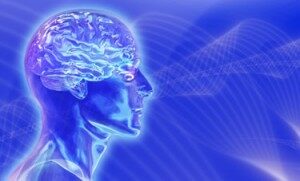 In the first segment of this 3-part series of mental fitness, we discussed the role of motivation in endurance sport. But, motivation is only one part of mental toughness and fitness.
In the first segment of this 3-part series of mental fitness, we discussed the role of motivation in endurance sport. But, motivation is only one part of mental toughness and fitness.
In this post, we look at the ways in which our mind can help or hinder our physical performance.
No doubt many of you have set significant (and perhaps daunting) performance-based goals for yourself this year. You’ll want to train your mind as well as your body in order to make those goals a reality.
Scientific studies provide some clues about the relationship between the mind and its impact on our performance. In this post, we’ll look at two connections in particular: 1) the central governor model and 2) the role of self-efficacy
Central Governor Model
The central governor model claims that the brain activates muscles to ensure that balance (a.k.a., physiological homeostasis) is maintained regardless of exercise intensity or duration (Noakes, 2007).
In other words: the brain doesn’t want us to blow up or hit the wall.
How does it do this?
Noakes says the brain uses sensory information, such as lactic acid, to determine the rate of perceived exertion (RPE), which is then used to determine if the current level of exertion will maintain or throw off this balance.
If the brain thinks the balance is about to go out of whack, it sends signals to encourage us–subtly or not so subtly–to stop. These signals might include pain, cramps, burning muscles, perceptions of fatigue and the like. In response to these signals, we may ease up, slow down or stop well before our body will actually have a problem.
The brain, according to this theory, is a protective sort. It really wants to keep us from blowing up. In general, this sounds good. But, when we are going for that breakthrough performance, we need to teach our brains to tolerate more exertion.
One implication of this model is that fatigue can be seen as an emotion, which begins as soon as we start, and increases in intensity the longer we exercise.
A second implication is:
“Each athlete finishes every race with some physiological reserve and could therefore have run slightly faster” (Noakes, 2007, p. 377).
As such, our brain’s desire to maintain balance may keep us from pushing through those remaining reserves to a breakthrough performance.
Most importantly, the research suggests we can train our brain to accept higher intensity or longer duration sessions by working through these sensations in a gradual and measured way.
So, when we get to *that* point in a hard session, when we want to just ease up–you know, just a little because we aren’t sure we can take it any further– we might not want to do that. Mantras, staying present and focusing on the task at hand can be useful for pushing past our edges to finding what we truly have in reserve. It’s likely we are not at our edge. Bobby McGee explains this process in this video.
Self-efficacy and mental toughness
While the central governor model discusses brain activity at a more subconscious level, other studies point to more conscious and intentional thought patterns that can aid with running performance. Luszczynska et al. (2006) conducted a 2-year longitudinal study of 139 runners (80% men) to understand the role of self-efficacy in predicting regular running and returning to running after a lapse. They found that when a person believed they can return to an activity after a set-back, they are more likely to do so. Additionally, athletes who clearly express their training intentions and racing goals are more likely to commit to and stick with the training plan. This connects nicely with our recommendation in a previous post to write your goals down if you want to make them real.
It’s important to note that this study clearly emphasizes that our thoughts precede action–action does not necessarily shape our thoughts.
In part 3 our our series, we turn to specific cognitive strategies you can employ during training and racing to support your physical efforts. In the meantime, please continue the conversation with us.
Are you able to push past your perceived limits? What role does mental fitness play in your training and racing?
*~*~*~*~*~*~*~*~*~*~*~*~*~*~*~*~*~*~
References
Luszczynska, A., Mazurkiewicz, M., Ziegelmann, J.P., and Schwarzer, R. (2007). Recovery self-efficacy and intention as predictors of running or jogging behavior: A cross-lagged panel analysis over a two-year period. Psychology of Sport and Exercise, 8, 247-260.
O’Connor, P.J. (2007). Monitoring and titrating symptoms: A science-based approach to using your brain to optimize marathon running performance. Sports Medicine, 37(4-5), 408-411.
Noakes, T.D. (2007). The central governor model of exercise regulation applied to the marathon. Sports Medicine, 37(4-5), 374-377.
Raglin, J.S. (2007). The Psychology of the Marathoner: Of one mind and many. Sports Medicine, 4-5, 404-407.
